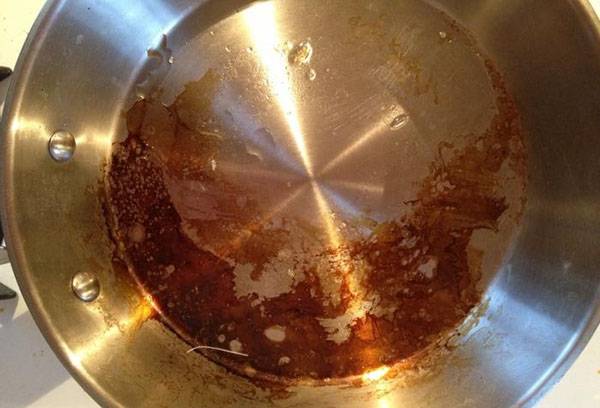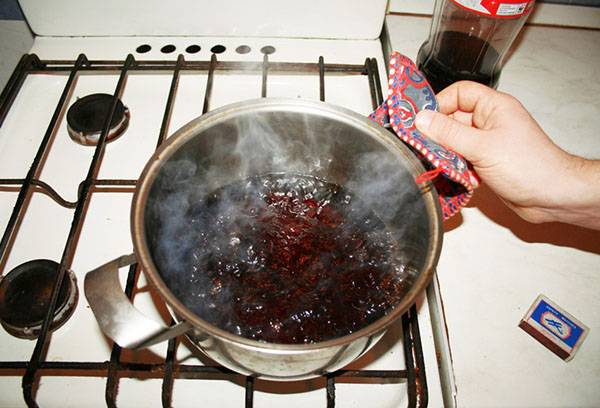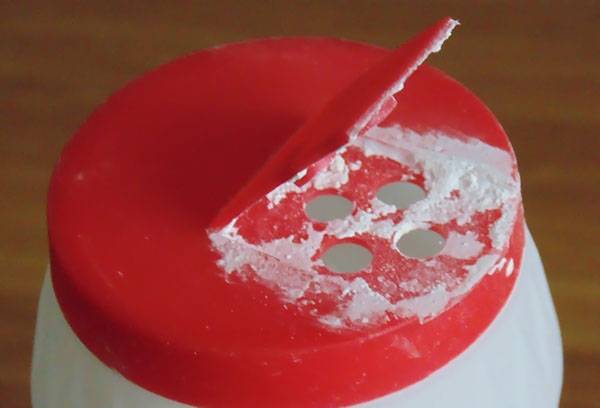The most effective ways to clean a bowl or pan from burnt jam
It’s not easy to clean both dishes and equipment from a layer of burnt sugar, but don’t throw them away! So be patient and try the following tricks to make things easier for yourself.

The very first and simplest step
Below in the article you will find more creative ways to clean the bottom of a pan that can surprise you with both the selection of products and the way they are used. But for now, we advise you to start with the simplest thing: fill the pan with water. Of course, when the thick layer of jam on the bottom resembles oil or resin in color, this step will not be enough, but to remove a thin burn, 6-8 hours in water will do the trick. After all, it is sugar, and if you keep the candy in water for a long time, it will sooner or later dissolve.
If 6 hours to save a pan is an unaffordable luxury, you can use several ways to improve and enhance the power of the method.
- Any type of dish will help clean the salt. Its weak or moderate solution can be used for both stainless steel or aluminum pans and enamel cookware. Just keep in mind that it will still take 3-4 hours for the burnt to soak.
- The use of citric acid will be even more effective. Under its influence, the burnt jam will soften faster and begin to move away from the bottom and walls of the dish.
- You can also use a vinegar solution, because this substance is famous for its wide range of uses when it comes to cleaning and removing various types of dirt.
Advice
If you simply fill the pan with water at room temperature with the addition of these products, then there is no point in worrying about ruining the dishes. As long as you don't heat the water or use abrasive cleaners, there's nothing to worry about.
After a few hours, the burnt jam will get wet, and you can easily clean it with cleaning powders, a metal sponge, but better yet, just an ordinary sponge.
If there is still heating
One of the most effective schemes is to “boil out” the burnt residue by pouring boiling water over it or simmering it on the stove for some time. The softening process in this case is faster, but if it is quite safe for an aluminum saucepan or stainless steel basin, enamel cookware can react to a sharp temperature change by cracking the enamel and quickly deteriorating. That is why it is recommended to heat the enameled water gradually by pouring warm water and bringing it to a boil on the stove.
Is it possible to intensify this process? Quite! A solution of salt, soda or citric acid instead of plain water will allow you to clean burnt jam from the pan a little faster. Just keep in mind that baking soda can cause aluminum to become covered with dark spots, and long-term contact with salt also harms this type of cookware. For stainless steel and enamel, some even prepare an explosive mixture of soda, salt and citric acid: this way the burnt jam at the bottom of the pan will certainly have no chance!
By the way
Sometimes when boiling carbon deposits on the stove at home, an onion cut in half is added to the water.They say that the effect is sometimes even better than using special products.
But as for heating vinegar, this is a controversial issue. Many people boil things in vinegar to make things white or try to clean metal utensils with a boiling solution, but we want to remind you that when heated, vinegar begins to release harmful substances into the air, which can affect your well-being. Be careful, and if you choose to boil with a vinegar solution, at least ventilate the room well and do not stay in it for those 10-20 minutes while the burnt substance “boils down.”
What about special powder products?
In fact, if the jam is very burnt, store-bought powder products will not help you: without soaking or boiling down the soot, you will spend a lot of time and physical effort, and the result is still unlikely to please you.
But if you first softened the carbon deposits at least a little, then you can clean it with a special powder, a metal sponge, or ordinary salt or soda.
But think in advance about the integrity of the dishes.
- An enamel pan may not withstand exposure to abrasive particles well, and during cooking, harmful metals will get into the food through deep scratches. But this is precisely what enamel is designed to protect against!
- As the protective layer of aluminum cookware is damaged during further use, the metal will also penetrate into the food, although if you are using an old aluminum basin, then the protective coating on it is most likely no longer there. It all depends on the degree of your health concern.
- Stainless steel pots and basins are quite resistant to such mechanical cleaning.The abrasive may only slightly damage the mirror shine, but otherwise it will only help you quickly clean the dishes.
Advice
If you made jam in a multicooker and did not calculate the mode, keep in mind that most of the containers of this technique have a non-stick coating, and under no circumstances try to clean the bowl with a metal sponge or, even worse, scrape off the carbon deposits with a knife. The jam will leave the bottom on its own if you fill the bowl with water, and the protective coating will not be damaged.
More complex ways to remove burnt marks
It is not known how they even thought of this, but it is also recommended to clean pots using such exotic substances as silicate glue or bleach! We warn you in advance: they are unlikely to be significantly more effective than the methods that we have already talked about, but if you have a craving for experiments, then you can give them a chance.
- It is recommended to remove strong burnt marks by “boiling” the burnt jam in water with the addition of 2-3 tablespoons of soda and a small amount of silicate glue.
- You can also rub the bottom and walls of the dishes with a mixture of laundry soap shavings and PVA glue and leave for several hours to act.
- If you have cleaned the carbon deposits, but do not want to wipe away the dark traces of it, some housewives recommend boiling a pan or basin with a “Whiteness” solution, but we, as in the case of vinegar, do not recommend doing this because of the harmful fumes that will fill the air .
Advice
The faster you start getting rid of burnt marks, the less effort and time it will take. If you let the crust completely dry and harden, then you will have to “boil” the carbon deposits on the stove more than once, and you will need to soak the pan for days!
We are sure that it is quite possible to clean your favorite pan from burnt jam, and now you have all the effective ways to deal with such deposits in your arsenal.



I thought about throwing the pan away. But I went to the site. The PVA glue method helped me, although I really doubted it. Thank you